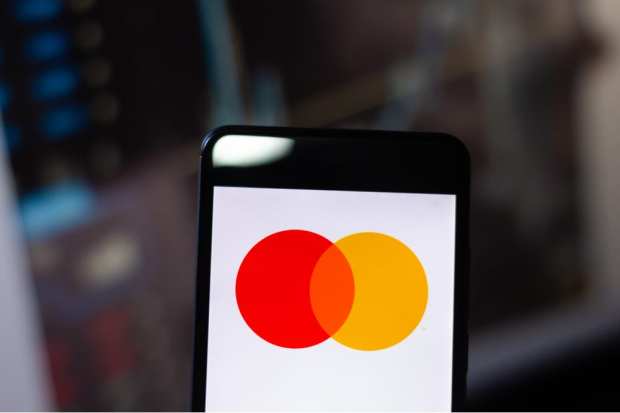Why Mastercard Bit On Flybits

In the art and science of reaching a consumer, some things never change. The gold standard of marketing is, was and ever shall be the same: Put the right product in front of the right consumer at the right time. Though much has changed in how that is done, that basic tenant remains the same.
“Digital has created a really interesting opportunity to engage the customer throughout their journey and make it possible to use the services that will help them have a better experience all around,” Francis Hondal, president of loyalty and engagement at Mastercard, told Karen Webster in a recent conversation. “What we can do with data is help them derive the greatest possible value from whatever it is they are doing.”
And increasingly, consumers are growing accustomed to deriving that value along the various touchpoints in their commercial journeys each day, Hondal noted. They have come to expect it to be delivered – from their Uber ride that shows up exactly when they need it, to their mobile-ahead orders ready to go when they are, to their groceries that show up on their doorstep within an hour or two. Consumers vote with their wallets, and they favor the brands that make it easy for them to quickly connect to the goods or services they want or need.
Banks, Hondal said, need to be on the same page as their customers in this respect, because at base, they are brands providing a service.
Building personalized, customized services for consumers, of course, requires knowing a tremendous amount about them. The good news for financial institutions, she pointed out, is that they have astounding amounts of data and tremendous potential within those data sets. The not-quite-as-good news is that having lots of data and having lots of actionable insight into that data are two very different things. FIs, Hondal told Webster, often find themselves struggling with the latter.
It is why, she told Webster, Mastercard has joined Flybits’ recent $35 million Series C round. Flybits is a contextual data intelligence company that offers tools to transform large, disparate data sets into a cohesive ecosystem with real-time insights. As Hondal pointed out, the tool can help their banking partners turn massive data sets into a 360-degree view of consumers that they can actually act on.
“I think with mobile engagement, we are seeing that the opportunity we have with technology and data-driven insights is real,” she said. “But the challenges are real, too, and we need to give banks an attainable path to get through them.”
Overcoming the Obstacles
Consumers aren’t coming to the bank anymore unless they have a particularly complex problem, Hondal said. Instead, their expectation is that the mobile devices in their pockets can serve as a bank branch, a retailer and a connection point to every human being they know. Consumers no longer wonder how they will get to any of those things – instead, they wonder how all of those things are going to be brought to them.
For banks, being part of all that connectivity is the right aspiration, but delivering on it is tricky – unless they have a clear path for turning all of that customer data into actual insights.
“And that can be tough for banks, which are often large institutions with legacy platforms, a diverse cross-section of customers and a regulatory environment that is very tough,” Hondal told Webster. Big ships don’t turn quickly, and when it comes to unlocking the potential of consumer data to enrich the customer experience, the U.S. market is less than halfway there.
“But I see change and growth happening at a faster clip, all over the industry,” she pointed out. “You see many more Flybits out there, more FinTechs that aren’t entering the market as a threat to banks, but as partners introducing more capability into the infrastructure.”
The technology isn’t the issue, Hondal said, because the technology is there. Now, the issues are how to connect all the separate business unit data silos in FIs, making the data sharing happen so those accurate views of the customer can snap into focus. But the sense of urgency in banks is there, she said, and a virtuous cycle of innovation pushing more innovation is on the horizon. The trend seems poised to accelerate.
What’s Next?
From the U.S., Hondal noted, we can look at markets like China, which are far more digitally advanced in the capabilities that Flybits helps banks deliver. The phone acts not just as a tool to make life easier, but also as a virtual concierge that “knows” how to connect the digital dots to offer the right service just as the user needs it.
That user might be a traveler who is landing is a new city where it is raining and gets a push notification asking if they would like a car called so they don’t have to wait in the rain. But ultimately, Hondal noted, it will also serve as an assistant for customers on their day-to-day life journeys. The new parents, the engaged couple, the first-time homebuyers – they are all verticals where new insights or more nuanced product designs can add value.
Banks have disadvantages, particularly in overcoming their legacy systems in embracing the digital era, she pointed out. But they also carry the advantage of coming with something that few other organizations can offer at quite such a high degree: consumer trust. Consumers ultimately believe their banks will protect their money, their data and their privacy – and leverage it only to directly enhance their personal experience.
“This is the bank’s advantage, because trust is how they do business, and they can build on that,” Hondal said. “What they need to do now is evolve beyond that position of trust and think about how to take it to the next level, and bring the customer more value through a better experience.”
